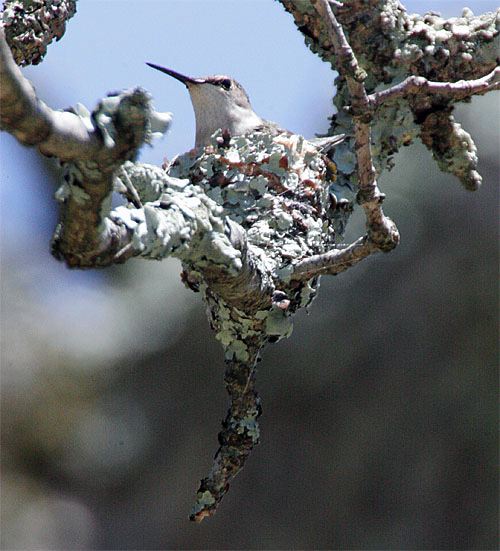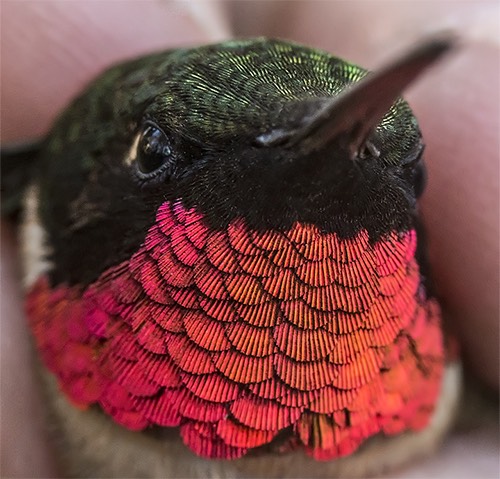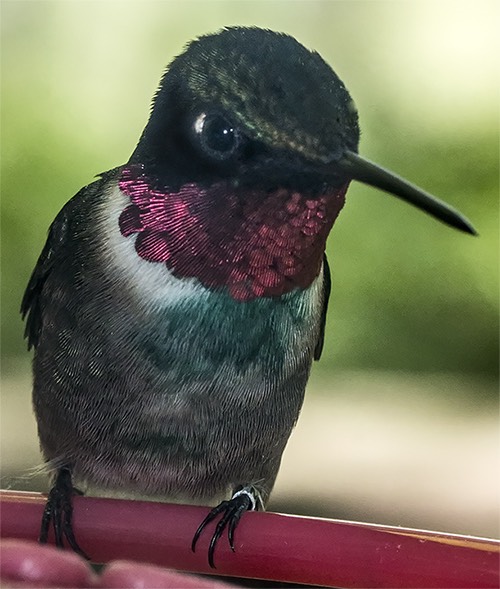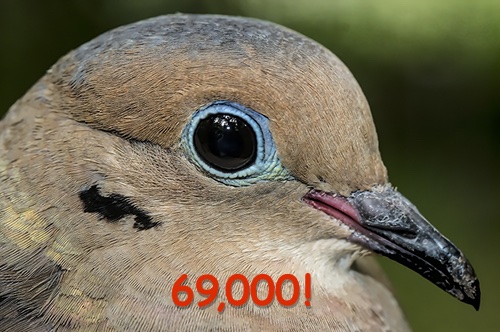- Established 1982 -HOME: www.hiltonpond.org
THIS WEEK at HILTON POND Subscribe for free to our award-winning nature newsletter (Back to Preceding Week; on to Next Week) |
A FEW "NEW" HUMMERS ARRIVE, Every year in April and May and sometimes even June we receive numerous e-mails and calls from folks wanting to know where their Ruby-throated Hummingbirds might be. We hear two typical comments, to wit: Situation 1--"I had hummingbirds earlier this spring, but now they've disappeared"; and, Situation 2--"This time last year I had lots of hummingbirds but this year I have none."
All text, maps, charts & photos © Hilton Pond Center Our response to Situation 1 is that early hummers may have been passing through on their way further north; AND/OR natural food sources (including tiny insects and nectar from sources such as Tulip Trees, above) become increasingly plentiful as spring progresses, with hummers having less interest in plain old sugar water; AND/OR females may be sitting on eggs (below) while males are aggressively defending territories such that they all have little time to visit feeders.
All text, maps, charts & photos © Hilton Pond Center For Situation 2 we usually mention our response to Situation 1 but follow-up with a simple, "In nature every year is different," plus a firm suggestion to keep feeders fresh in the hope more hummers will eventually appear. At Hilton Pond Center, 2019 has indeed been different for Ruby-throated Hummingbirds--and maybe even "more different" than anticipated!
All text, maps, charts & photos © Hilton Pond Center We had an extremely slow start in 2019, continuing through the entire month of May. This year's first ruby-throat--an adult male with red gorget (above)--did not appear until 2 April, about a week later than our early record of 26 March 2015. Both these birds arrived with a band we had applied in a previous year. Our first banded female of 2019 came in on 17 April.
The startling thing this year is we did not get a "new" hummingbird until 20 May, nearly TWO MONTHS after our earliest arrival date for any ruby-throat, banded or not. Twelve more new RTHU trickled in by the end of the month of May, giving us just 13 for the year. (See adult male, above, after banding.) This is about average through 31 May for our 36 years of research but far below the 55 we had banded by that date back in 2015. Even more surprising this year so far is the number of "old" (previously banded) ruby-throats that have returned to Hilton Pond and been recaptured. After our first one on 2 April we caught only three more that month, but May was a flurry of activity with 37 returns captured in the latter half. When you consider 60-80% of young hummingbirds die in their first year, several of our previously banded birds truly do qualify as "old," as shown by the Center's list below of 41 returns this season through May. (Our record for returns in a complete year of hummingbird research was 62 in 2017, so we still have a way to go to match that total--although we've already surpassed our 36-year average of 31.)
(NOTE: The longevity record for a Ruby-throated Hummingbird is nine years, an age very seldom reached by these tiny long-distance migrants. Our oldest record for Hilton Pond is eight years, so with anticipation we'll be looking for that After 6th Year bird again next year.)
All text, maps, charts & photos © Hilton Pond Center Through 31 May 2019, newly banded adult females (above) outnumbered adult males 12 to 6, with no immature RTHU yet appearing in our nets or traps. We actually wouldn't expect our first fledglings until the first half of June, what with the Center's earliest-ever youngster having been banded on 4 June 2005. Again, we really can't explain our relative dearth of new, unbanded Ruby-throated Hummingbirds in 2019, but we're quite pleased with the big number of returning hummers. After all, these are RTHU that survived their first year and successfully migrated to Central America, returning in at least one following year. And for that After 6th Year female (above) we recaptured this spring, she's made the trip down and back AT LEAST seven times--quite an accomplishment for a bird the size of your thumb!
All text, maps, charts & photos © Hilton Pond Center So we remind you once more: Do not be disappointed or disillusioned if it seems you've had fewer hummingbirds so far this spring. Even though this scenario may seem unusual, it's simply different from what happened in previous years--or maybe just different from the way you remember things! (It's hard to know how many hummers you actually have without banding them.) In any case, keep your feeders fresh--and by all means plant more native nectar flowers to vary your hummers' diet, and sooner or later you're likely to see an increase in Ruby-throated Hummingbirds outside your kitchen window Maybe one of them, like the adult male above from Hilton Pond Center, will even be banded and color-marked! That would REALLY be different!
All text, maps, charts & photos © Hilton Pond Center On 8 May 2019 we banded our 69,000th bird at Hilton Pond Center, a male Mourning Dove (above) with pale slate-blue cap, rosy breast, black "ear" spot, iridescent nape--and did we mention bright blue eye shadow? This was also our 667th MODO captured and banded in 38 years of work at the Center. If Ruby-throated Hummingbird numbers increase this summer and winter finches show up in big flocks this fall, we might reach the 70,000-bird plateau before year's end. All text, maps, charts & photos © Hilton Pond Center
Checks also can be sent to Hilton Pond Center at: All contributions are tax-deductible on your Don't forget to scroll down for Nature Notes & Photos, |
|---|
|
"This Week at Hilton Pond" is written and photographed by Bill Hilton Jr., executive director of Hilton Pond Center for Piedmont Natural History
|
|
|
Please refer "This Week at Hilton Pond" to others by clicking on this button: |
|


















 Please report your
Please report your